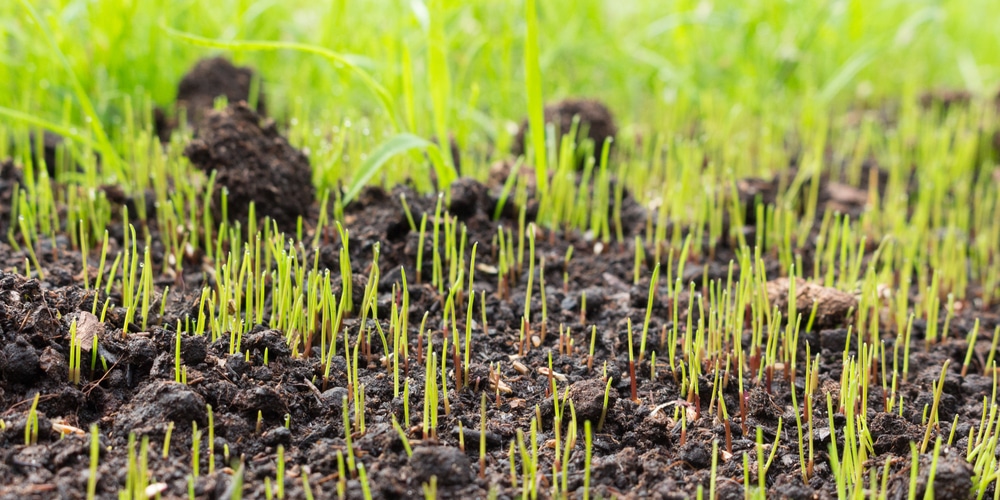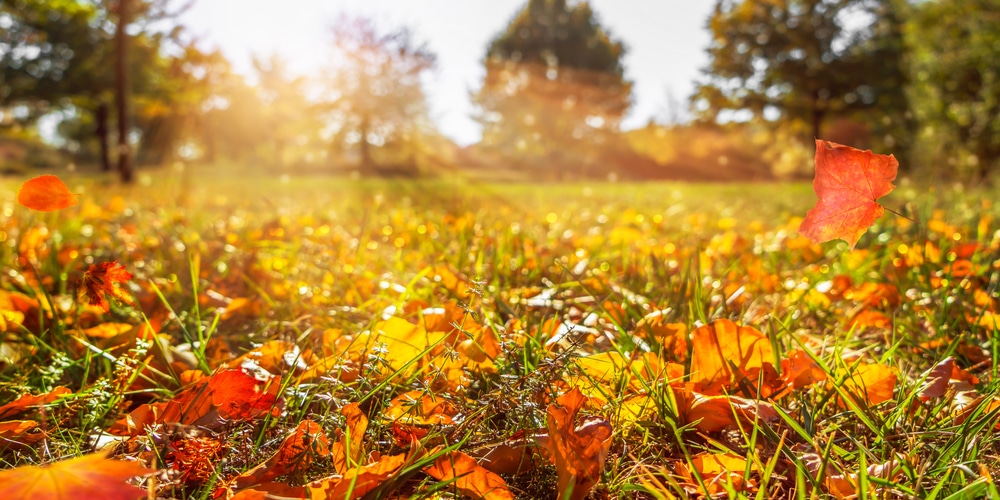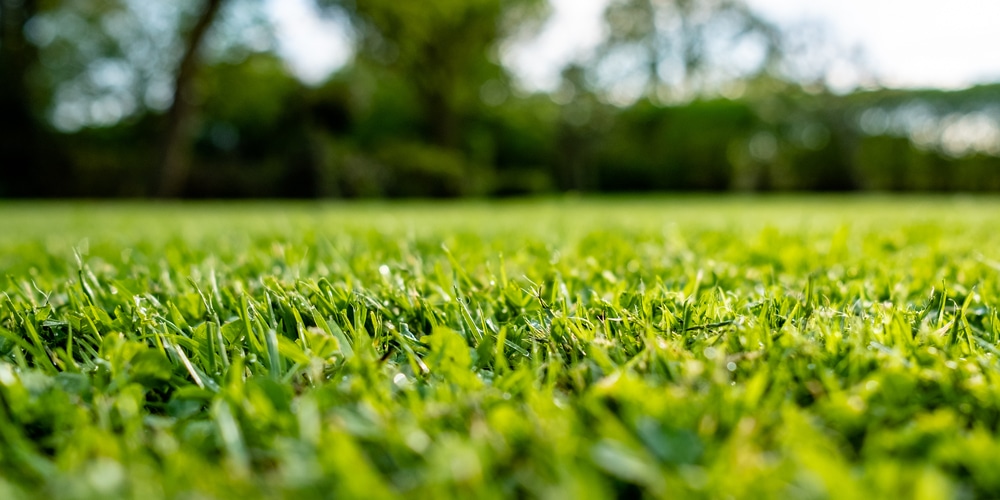If you’re planning to plant a fescue lawn, it’s a good idea to do your research so you can grow your seeds or lay sod under the best possible conditions. Planting fescue at the correct time of year will give your lawn a distinct advantage. Whether you’re planting grass seeds, laying sod, or overseeding the right timing will help your lawn thrive. Time your planting to help maximize fescue’s strengths. Let’s look at the best time of year for planting a fescue lawn.
Fall is the best time for planting a fescue lawn as fescue is a cool-season grass
When to Plant Fescue
Fescue is a cool-season grass that is best planted when soil and air temperatures are cool. It’s best to plant a fescue lawn, overseed your yard, or lay sod in the late summer or early fall when the weather is starting to cool down. You can also plant a fescue lawn in the early Spring. Planting a fescue lawn at these times will allow for optimal natural growth.
It’s best to plant fescue seeds when the soil temperature is between 60 and 65 degrees Fahrenheit. This will mean the seeds can germinate adequately and will also grow a strong root system. In most places, these soil temperatures will be during the Fall or Spring. You can plant cool-season grasses such as fescue when the air temperature is between 68 and 77 F. Here’s how to take soil temperature.
It’s best to work with nature rather than against it, as this will help your seeds to get the best start in life. Planting fescue in either the early Spring or fall will allow the seeds to get off to a strong start. They will also be able to avoid the seasonal stresses associated with winter or summer.
Planting a Fescue Lawn in the Fall
The best time to plant fescue seeds is in the late summer to early fall, as it’s a cool-season grass. Fall planting will provide your seeds with several advantages that can’t be achieved at other times of the year.
The air temperature begins to drop in the fall, but the soil will still retain some of its summer warmth. These are the perfect conditions for growing grass seeds. The nights will also be cool, and the days moderately warm. These conditions will allow your grass seeds to grow fast and establish strong roots before winter sets in.
There are many other benefits of fall planting. As the air and soil temperatures begin to cool down, rain is also likely to arrive, providing adequate moisture, encouraging germination. Gentle rainfall will meet your lawn’s needs and mean that you don’t have to wait for your seeds by hand or with a sprinkler system.
Fall is a better time to plant fescue grass than Spring, as the soil is more likely to maintain healthy moisture levels. You may find that your lawn becomes waterlogged in the Spring, which isn’t ideal for growing fescue. In the fall, invasive weeds start to go dormant due to temperature decreases. This will give your fescue grass a chance to grow without being smothered by weeds. Insect pests are also less active in the fall you there will be less chance that your yard has problems with infestations.
The exact time to plant fescue will depend on where you live. If you reside in the Upper Midwest, you can plant grass seed in mid-August. For transition zone states, including North Carolina and Arkansas, it’s best to wait until September to plant fescue seeds. If you wait too long and plant your seeds late, you may end up with a lower germination rate, and your grass will grow less hardy roots. Ungerminated seeds may lay dormant during winter and germinate when Spring arrives.
Planting a fescue lawn will give seeds the best chance as they will have a complete fall growing season to establish themselves. Early Spring will bring additional cool-season growth before the hotter summer weather, which can cause stress to new grasses.
Planting a Fescue Lawn in the Spring
The second-best time to plant fescue seeds is in the early Spring. After the winter, soil and air temperatures will start to warm up, creating the perfect conditions for fescue. Soil temperatures in Spring are likely to be about 60 degrees Fahrenheit which is ideal for fescue.
The best spring planting times will vary slightly depending on your location. If you live in a transition zone, you may be able to plant your new grass seed in March. If you live further north, it’s best to wait until April or May. It’s best to check your soil temperature using a soil thermometer, as this will help you to determine the best time to plant fescue seeds.
Spring is a reasonably good time to plant fescue, but the season does come with some challenges. If you live somewhere where there are heavy spring rains or melting snow, the soil will be colder for longer. This can cause problems germinating fescue seeds. New grass will also be more prone to developing fungal disease during the Spring as your lawn is likely to be wetter. If you live somewhere warm, you may want to try Bermuda. The best time to plant Bermuda is in the early fall.
Bottom Line
Fall is the best time for planting a fescue lawn as fescue is a cool-season grass. Planting grass seeds at the correct time will give your yard the best possible chance of thriving. If you decide to grow your fescue seeds in Spring, it will also give your lawn less time to become established before the summer. Spring-planted fescue often struggles due to the summer heat.
If you’re in the south, you may have to deal with how to get Bermuda grass out of your fescue. Here are our picks for the best crabgrass removal tools.
Exact planting times will vary depending on which state you live in and the climate. You can use a soil thermometer to determine whether the conditions are suitable for planting fescue. Plant your fescue lawn when the soil temperature is approximately 60 degrees Fahrenheit. Here’s the best time of day to cut your lawn.
It’s also a good idea to choose a high-quality fescue seed or lay sod with a root system already established. Following the above tips will allow you to achieve a lawn that is healthy, green, and thriving.



